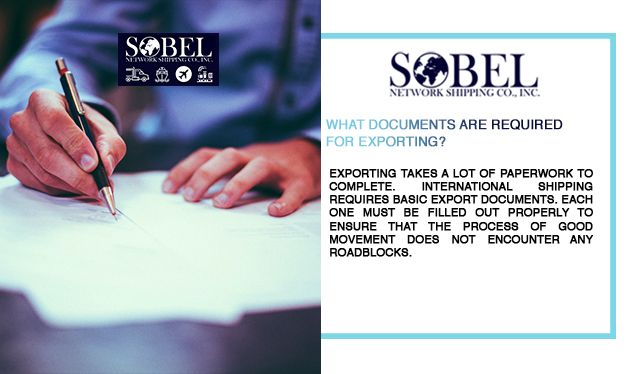Exporting takes a lot of paperwork to complete. International shipping requires basic export documents. Each one must be filled out properly to ensure that the process of good movement does not encounter any roadblocks.
Proforma Invoice
The start of an export exchange beings with an inquiry about products. The inquiry is a quote. With a domestic prospect, you have a standard quotation form, but with an international transaction, your quote is provided via a proforma invoice. The international prospect often requires the proforma invoice to effectively arrange to finance, obtain a letter of credit, or obtain an import license.
The proforma invoice is similar to any invoice. It will list the following:
- Name of buyer and seller in the transaction
- Good description
- Harmonized System classification
- Price
- Payment terms
- Delivery details
- Currency used for quote
Your proforma invoice will have an end date which means everything should be conducted within the required period.
Commercial Invoice
After completing the proforma invoice, you’ll need to prepare the goods for shipping and fill out the commercial invoice. The commercial invoice includes the details of the transaction. You’ll include things such as order number, the purchase number, reference number, and banking or payment information. Also, include any relevant marine insurance information or details to ensure that the delivery of the goods is prompt, and you obtain full payment from the customer.
Packing List
The packing list is a detailed list that contains:
- Freight forwarder information
- Bank being used
- Customs officials in the US
- Destination country
- Items being shipped
- Net/gross weight
- Dimensions of packages in both U.S. imperial and metric measurements
- Identifying markings on all packaging
- Special care instruction
Certificate of Origin
A certificate of origin identifies where the country originates. A semiofficial organization must sign the certificate of origin, or it must have the country’s consulate office’s signature. A chamber of commerce will charge a fee to sign and stamp the certificate. You’ll also need to deliver the completed form to the chamber office to obtain a stamp and signature.
Companies often forego the expensive process of a courier service and instead opt to save money by relying on electric certificates of origin (eCO) for shipments.
Country-Specific Certificates
Often country-specific certificates are needed The U.S. has 14 trade agreements with 20 countries that offer reduced or no-duty rates.
Certificate of Free Sale
A Certificate of Free Sale is often referred to as a Certificate to Foreign Government. It serves as evidence of goods for items such as food, biologics, medical devices, and cosmetics. Are being legally sold and are free from any restrictions. In addition, it shows they have been approved by regulatory authorities.
Shipper Letter of Instruction
Your freight forward is an important partner in your export process. They will arrange the transport of goods and ensure that all details are taken care of by missing a Shipper Letter of Instruction
AES
You can file the Automated Export System (AES) electronically. Exports valued at over $2,500 per item can be submitted via the AES. The freight forwarder will usually conduct the filing of the AES.
Inland Bill of Lading
An Inland Bill of Lading is the first transport document needed for international shipping. You can create the document yourself or have it prepared by the inland carrier.
Ocean Bill of Lading
When shipping via an ocean vessel, you’ll need to fill out an ocean bill of lading. There are two types of documents: the Straight Bill of Lading which is used for a specific consigning is nonnegotiable and the Negotiable Bill of Lading which is consigned to order and is then signed by the shipper.
Air Waybill
When goods are shipped on a plane then they must have an airwaybill. The air waybill acts as a receipt of goods.
Dangerous Good Form
When products are considered dangerous goods then they must be accompanied by suitable dangerous goods from within the shipment. The IATA form ‘Shipper’s Declaration for Dangerous Goods’ is needed for air shipments.
Bank Draft
A bank draft is needed for the international sales process to control the exportation of the goods and ensure funding to the buyer.


